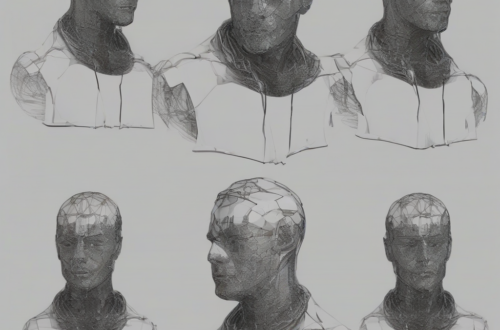Tri-State Pest Control: Your Comprehensive Guide to Pest Management
In the bustling tapestry of life, pests often weave their unwanted threads, disrupting our peace and posing potential health risks. From the tiny, scurrying roaches to the tenacious termites gnawing at our foundations, pest infestations can quickly become a source of frustration and anxiety. Fortunately, professional pest control services exist to combat these unwelcome guests, offering a range of solutions tailored to specific needs and environments.
This comprehensive guide delves into the world of Tri-State pest control, exploring its multifaceted aspects and empowering you with the knowledge to make informed decisions regarding your pest management needs. We’ll cover:
- The Importance of Professional Pest Control: Understanding the benefits and why relying on experts is crucial.
- Common Pests in the Tri-State Area: Identifying the most prevalent pests and their unique challenges.
- Effective Pest Control Methods: Exploring a wide array of techniques, from traditional to innovative.
- Choosing the Right Pest Control Company: Key factors to consider when selecting a reputable service provider.
- Preventive Measures: Proactive strategies to minimize the risk of infestations.
- Safety and Environmental Considerations: Addressing concerns regarding pesticide use and responsible pest management.
The Importance of Professional Pest Control
While DIY pest control solutions may seem appealing for a quick fix, the reality is that relying on professional expertise offers several significant advantages:
- Accurate Identification: Experienced pest control technicians can accurately identify the species of pest, allowing them to tailor treatments for optimal effectiveness.
- Comprehensive Treatment Plans: Professionals develop personalized plans, considering factors like the infestation’s severity, the environment, and potential risks.
- Safe and Effective Pest Control: They utilize safe and environmentally responsible methods, minimizing risks to humans, pets, and the surrounding ecosystem.
- Preventative Measures: Professional services often include preventative measures, helping to deter future infestations and protect your property.
- Peace of Mind: Entrusting pest control to professionals frees you from the hassle and worry of dealing with these unwanted guests.
Common Pests in the Tri-State Area
The Tri-State area, encompassing New York City, New Jersey, and Connecticut, is a diverse region with its own unique pest challenges. Some of the most prevalent pests include:
- Rodents: Rats and mice are notorious for their ability to adapt and thrive in urban environments. They can cause significant damage to property, spread diseases, and contaminate food.
- Cockroaches: These resilient insects are masters of survival, often found in kitchens, bathrooms, and basements. They can trigger allergic reactions and spread bacteria.
- Termites: These wood-destroying insects can silently wreak havoc on homes and buildings, causing structural damage that can be costly to repair.
- Bed Bugs: These tiny parasites feed on human blood, leaving itchy bites and potentially spreading diseases. Bed bugs are highly adaptable and can infest homes, hotels, and other public spaces.
- Ants: From the common carpenter ants to the invasive fire ants, these social insects can create nuisances, damage property, and pose health risks.
- Mosquitoes: These biting insects are notorious for spreading diseases like West Nile virus and Zika virus. They thrive in warm, humid environments.
- Ticks: These parasitic arachnids can transmit Lyme disease and other serious illnesses. They are prevalent in wooded areas and tall grasses.
Effective Pest Control Methods
Modern pest control employs a variety of methods, each with its own strengths and limitations. Some of the most effective techniques include:
- Traditional Pesticides: These chemicals are designed to kill pests directly. While effective, their use requires careful application to minimize environmental impact and risks to humans and pets.
- Integrated Pest Management (IPM): This holistic approach emphasizes prevention and control measures, minimizing the use of pesticides whenever possible. IPM strategies include sanitation, habitat modification, and targeted treatments.
- Biological Control: This method involves introducing natural enemies of pests, such as beneficial insects or nematodes, to control populations.
- Trapping and Exclusion: Traps capture pests, while exclusion techniques like sealing cracks and holes prevent them from entering buildings.
- Heat Treatments: This method uses high temperatures to eliminate pests, often effective for bed bugs and other heat-sensitive insects.
Choosing the Right Pest Control Company
Selecting the right pest control company is crucial to ensure effective and safe pest management. Consider these key factors:
- Reputation and Experience: Research the company’s track record, licenses, and certifications.
- Services Offered: Make sure they provide the specific services you need for your pest problem.
- Customer Reviews: Read reviews from previous clients to gauge customer satisfaction and reliability.
- Pricing and Guarantee: Inquire about pricing, payment plans, and guarantees offered.
- Communication and Transparency: Ensure the company provides clear communication about the treatment process, potential risks, and safety precautions.
Preventive Measures
Proactive pest control is key to minimizing the risk of infestations. Some preventive measures include:
- Sanitation: Maintain a clean and tidy environment, especially in food preparation areas. Store food properly, dispose of garbage regularly, and clean up spills promptly.
- Seal Entry Points: Inspect your home for cracks, holes, and other entry points and seal them using caulk or weather stripping.
- Eliminate Moisture Sources: Pests thrive in damp environments. Fix leaks, ventilate damp areas, and clear gutters to reduce moisture levels.
- Maintain Landscaping: Keep lawns trimmed, trees pruned, and vegetation away from buildings to prevent pests from finding shelter and access.
- Regular Inspections: Conduct regular inspections, especially in attics, basements, and crawl spaces, to detect signs of pest activity early on.
Safety and Environmental Considerations
Pesticide use is a sensitive topic, with potential risks to human health, pets, and the environment. Responsible pest control emphasizes safe practices and environmental considerations:
- Pesticide Safety: Always choose licensed and experienced pest control technicians who prioritize safety protocols.
- Minimize Pesticide Use: Encourage the use of IPM strategies and non-chemical methods whenever possible.
- Environmental Impact: Consider eco-friendly pest control options and minimize the use of pesticides that can harm beneficial insects and wildlife.
- Safety for Children and Pets: Follow all safety guidelines regarding pesticide use and keep children and pets away from treated areas.





